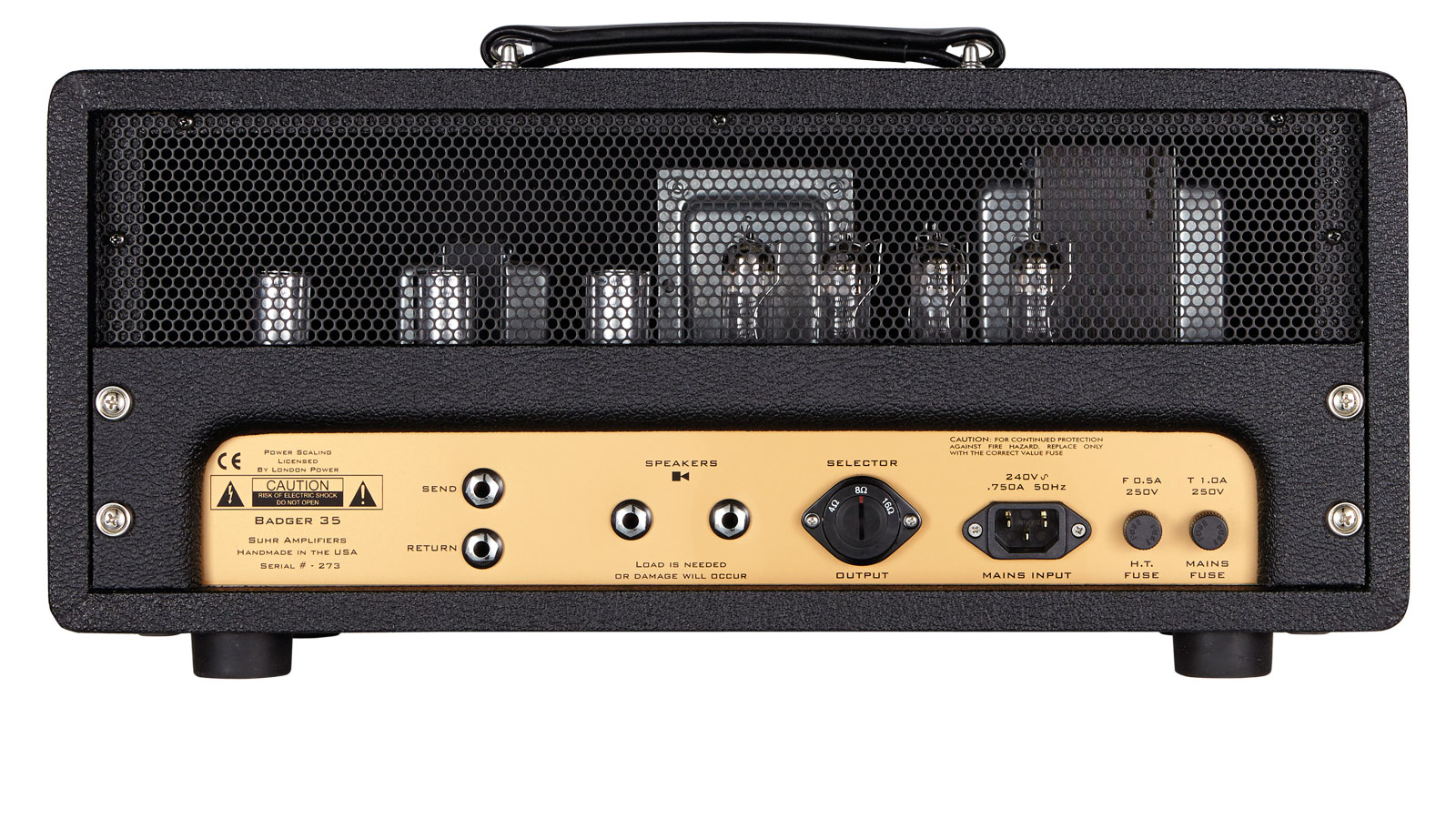MusicRadar Verdict
A versatile head that conjures up superb classic rock and blues tones.
Pros
- +
Ideal for nailing British blues rock and classic rock tones. Excellent build. Decent value considering its handmade in the USA.
Cons
- -
Just your bank manager's reaction.
MusicRadar's got your back

Suhr Badger 35

Rear

Speaker out
There are many great boutique guitar, amp and pedal builders today, but the number of those equally adept and revered in all disciplines can probably be counted on the fingers of one hand. One name you would definitely have to include would be John Suhr. Here we're looking at his British-influenced Badger 35 head.
The Badger 35 is for stage use, with its electronics surrounded by a tough ply sleeve. It may not have the high-end looks of other Suhr amps, but the Badger 35 is still beautifully put together, with the gold Perspex badge and control panels offering a clue to the amp's sonic inspiration.
"The Badger is definitely dialled in to the classic rock and blues invasion tones of the late 1960s and early 1970s, sounding incredible with our PAF-loaded Les Paul"
Inside the aluminium chassis, there are two quality PCBs, one holding most of the pre- and power-amp components, the other holding the power scaling circuit, used under licence from London Power.
All the front- and rear-panel components and valve bases are chassis-mounted and connected to the PCBs with high-quality hook-up wire. Two large transformers and a similarly heavyweight choke mean that, despite its compact dimensions, the Badger 35 is no lightweight.
The front panel is relatively straightforward, with controls for drive, gain, bass, mid and treble, along with a power control that connects to the power scaling section, proportionately varying key voltages in the circuit to achieve real power stage clipping at any volume level.
Sounds
The Badger 35's gold perspex control panel should give a clue that this amp is aimed at vintage 60s Brit-influenced tones. There's more than enough range to travel from Hanwell all the way to Dartford and back, with sparkling chimey rhythm tones at lower gain levels giving way to a harmonically rich crunch and singing leads that are perfect for blues.
We loved the amp's dynamic response and the way it cleans up just by backing off the volume control a little. It sounds great at lower levels too, with the sophisticated power scaling feature meaning you can dial in just the right amount of output stage clipping at any volume level.
Want all the hottest music and gear news, reviews, deals, features and more, direct to your inbox? Sign up here.
Overall, the Badger is definitely dialled in to the classic rock and blues invasion tones of the late 1960s and early 1970s, sounding incredible with our PAF-loaded Les Paul, with plenty of volume for live gigs using the matching Suhr 1x12 extension cab.
Another superb amp from Suhr then, built to an exceptionally high standard, delivering a quality of tone that's in a different league to most of the competition.
It goes without saying that this kind of quality doesn't come cheap, but it's not completely out of mortal range and, considering it's handmade in the USA, we'd say the price is fair for what's on offer.
Aspiration is a key driving force of the MI industry, with many beginners dreaming that one day they'll be playing through an amp such as this. Does the reality of this Suhr amp live up to that? We say, emphatically, yes.